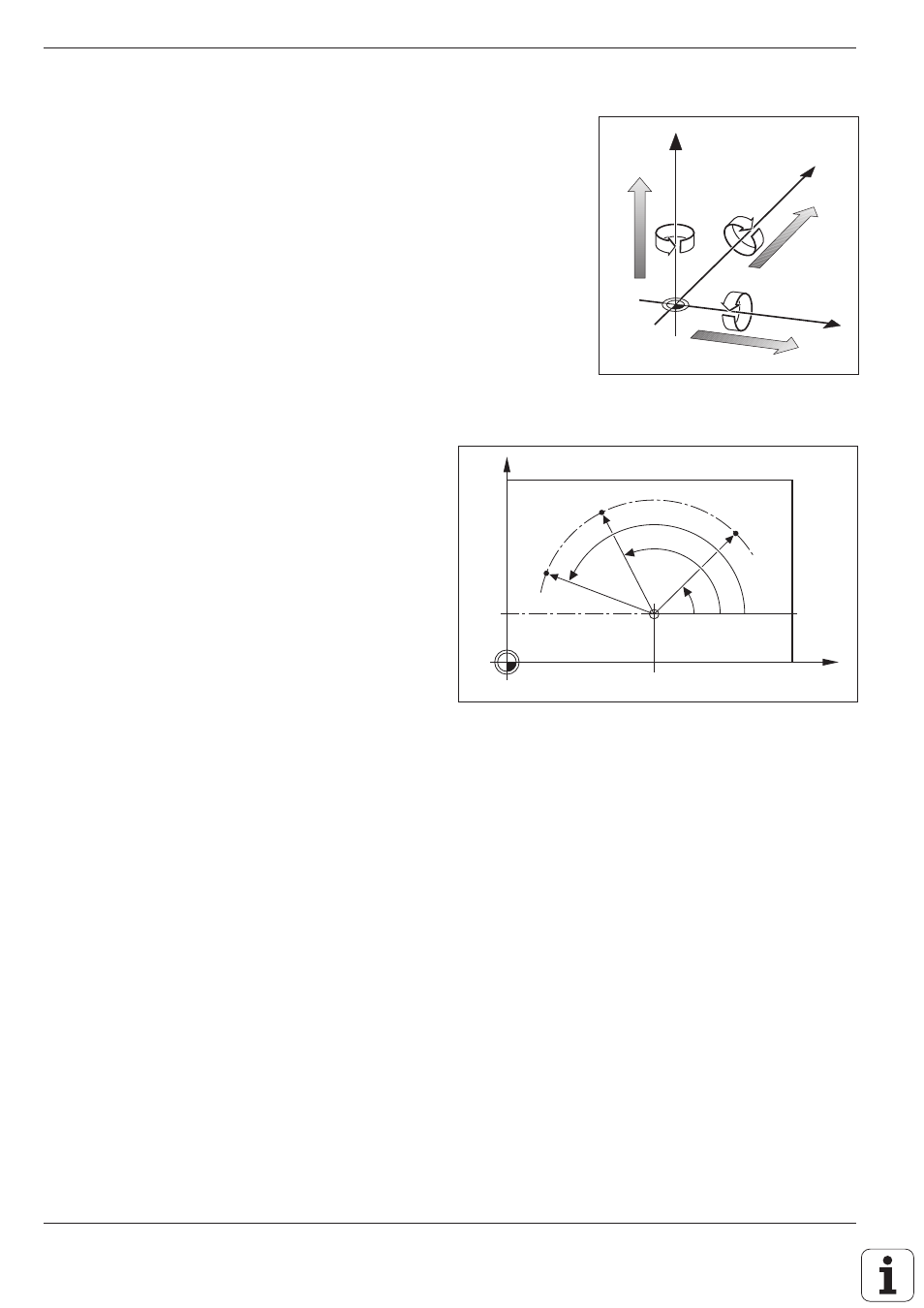Additional axes -12 polar coordinates -12 – HEIDENHAIN TNC 407 (280 580) ISO Programming User Manual
Page 30

TNC 426/TNC 425/TNC 415 B/TNC 407
1-12
1
Introduction
Additional axes
The TNC can control the machine in more than three axes. Axes U, V and
W are secondary linear axes parallel to the main axes X, Y and Z, respec-
tively (see illustration). Rotary axes are also possible, and are designated
as A, B and C.
Polar coordinates
Although the Cartesian coordinate system is
especially useful for parts whose dimensions are
mutually perpendicular, in the case of parts contain-
ing circular arcs or angles it is often simpler to give
the dimensions in polar coordinates. While Carte-
sian coordinates are three-dimensional and can
describe points in space, polar coordinates are two-
dimensional and describe points in a plane.
Polar coordinates have their datum at a pole I, J, K
from which a position is measured in terms of its
distance from the pole and the angle of its position
in relation to the pole.
You could think of polar coordinates as the result of
a measurement using a scale whose zero point is
fixed at the datum and which you can rotate to
different angles in the plane around the pole.
The positions in this plane are defined by the
• Polar Radius R, the distance from the circle
center I, J to the position, and the
• Polar Angle H, the size of the angle between
the reference axis and the scale.
Fig. 1.11:
Identifying positions on a circular arc with polar coordinates
Fig. 1.10:
Direction and designation of
additional axes
Y
B+
V+
X
Z
C+
A+
W+
U+
X
Y
J = 10
0
°
I = 30
H
1
H
2
H
3
R
R
R
